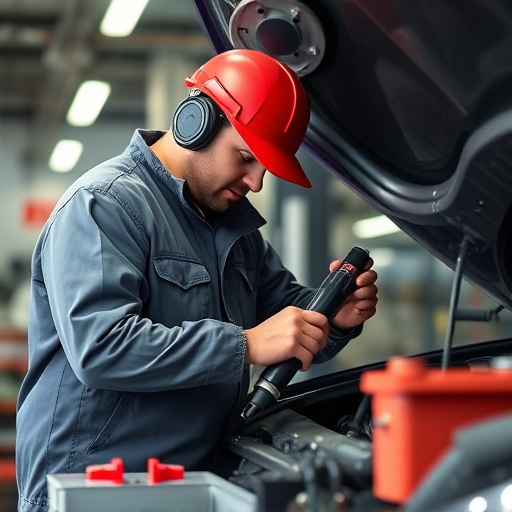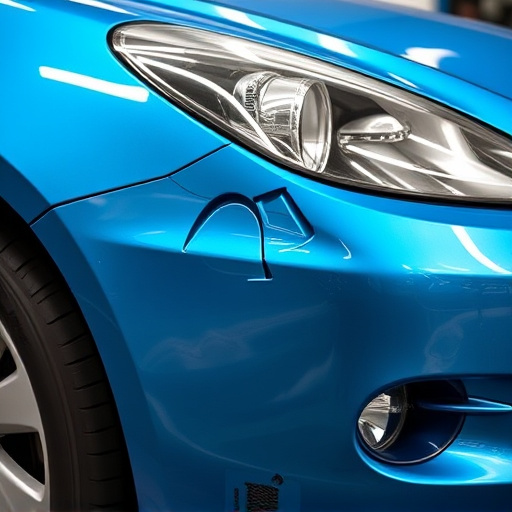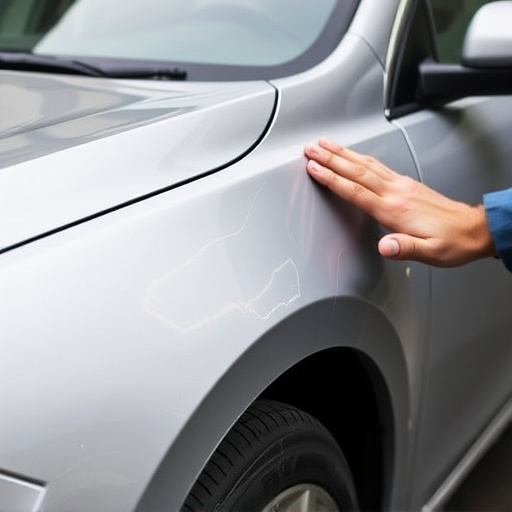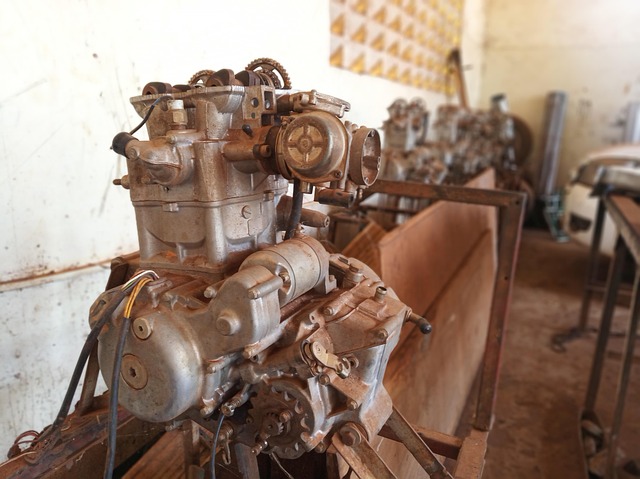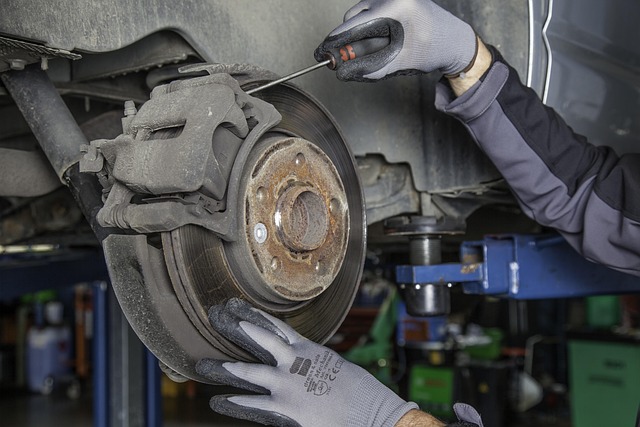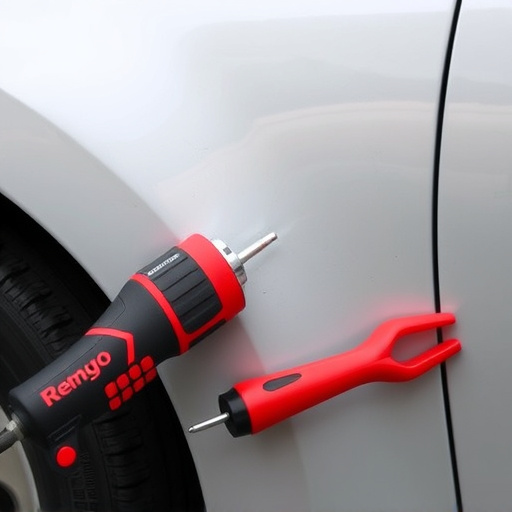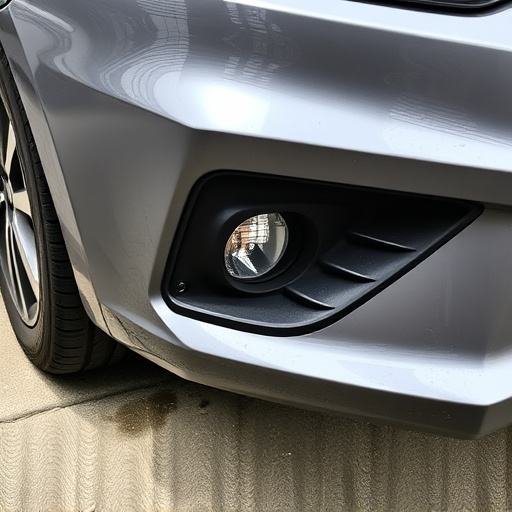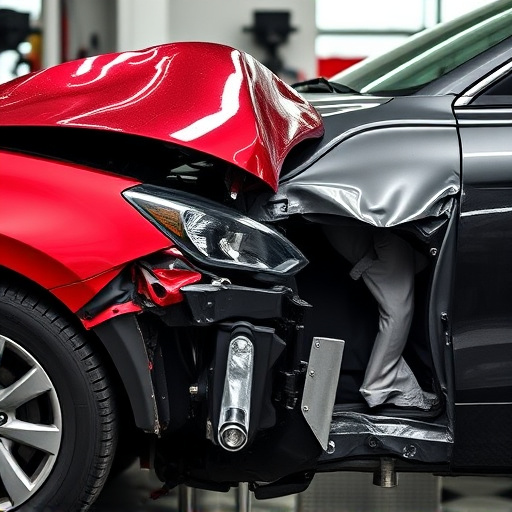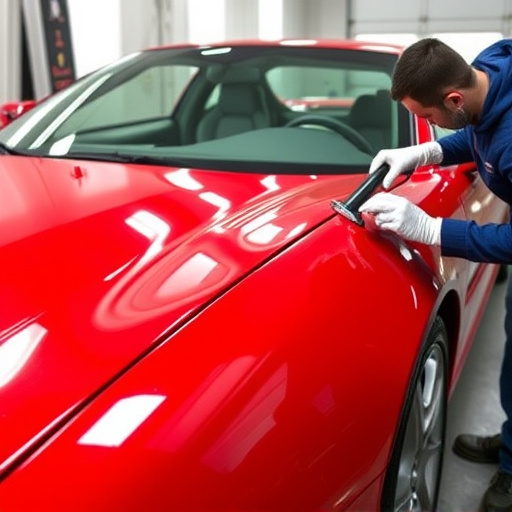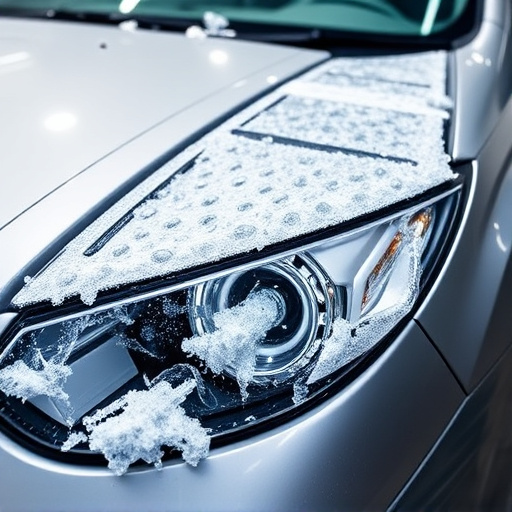Tesla vehicles' advanced technology and specialized construction pose unique challenges for structural integrity repairs. Auto collision centers must employ advanced expertise and equipment, focusing on lightweight materials like aluminum due to its strength-to-weight ratio. The process involves meticulous damage assessment, cleaning, priming, precise repair techniques (spot welding, brazing, adhesive bonding), alignment, and rigorous testing to ensure long-lasting structural integrity and performance standards while preserving the vehicle's original design and aesthetic appeal.
Tesla vehicles are renowned for their advanced technology and innovative design, but like any vehicle, they can face structural damage. This article explores the crucial topic of Tesla structural integrity repair using aluminum techniques—a game-changer in addressing common challenges. We’ll delve into understanding Tesla’s unique structural design and the role of aluminum in restoration. Additionally, a step-by-step guide offers a practical approach for effective repairs, ensuring your Tesla maintains its renowned strength and durability.
- Understanding Tesla's Structural Integrity and Common Repair Challenges
- The Role of Aluminum in Restoring Structural Integrity
- Step-by-Step Guide to Effective Tesla Structural Repair Using Aluminum Techniques
Understanding Tesla's Structural Integrity and Common Repair Challenges
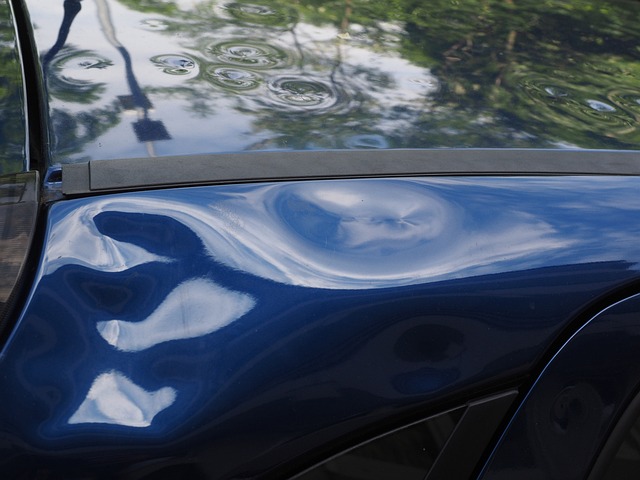
Tesla vehicles are renowned for their advanced technology and sleek design, but like any other car, they can be susceptible to damage, especially in the event of a vehicle collision. Understanding Tesla’s structural integrity is key when it comes to repairing these innovative cars. The brand prioritizes lightweight materials and sophisticated manufacturing processes to ensure optimal performance and safety. However, this unique construction also presents specific challenges during the repair process.
Common issues arise when dealing with Tesla structural integrity repair due to the specialized nature of their vehicles. Auto collision centers must possess the expertise and equipment to handle intricate body panels and frameworks accurately. Common challenges include aligning and replacing damaged parts while maintaining the vehicle’s original design intent and performance standards. Car bodywork services that specialize in Tesla repairs employ advanced techniques, such as computer-aided design (CAD) and 3D scanning, to ensure precise measurements and a seamless fit during the repair process.
The Role of Aluminum in Restoring Structural Integrity
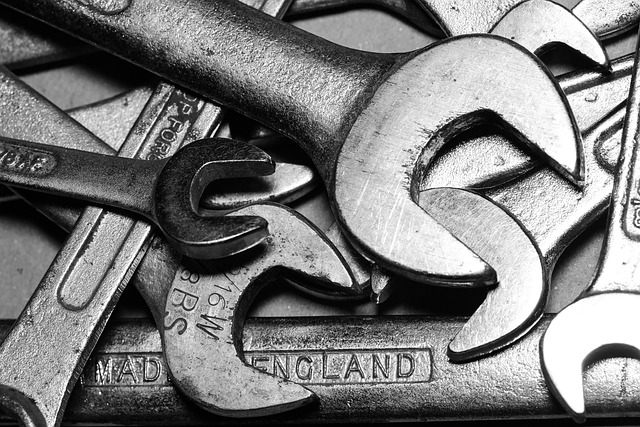
Aluminum plays a pivotal role in Tesla structural integrity repair due to its exceptional properties. Its lightweight yet robust nature makes it an ideal choice for restoring and reinforcing vehicle bodies, which is crucial in maintaining the overall structural integrity of Teslas. This metal is particularly advantageous in auto body work as it can be easily formed, welded, and joined, allowing for precise and intricate repairs without compromising on the final finish.
In the realm of car paint repair and vehicle body repair, aluminum’s corrosion resistance stands out. By utilizing specialized techniques to treat and protect exposed metal surfaces, technicians ensure that the repaired sections not only look as good as new but also withstand the elements effectively. This meticulous process is essential for long-lasting repairs, ensuring that Tesla owners can continue to enjoy their vehicles’ structural integrity and aesthetics for years to come.
Step-by-Step Guide to Effective Tesla Structural Repair Using Aluminum Techniques

Repairing Tesla’s with aluminum techniques is a specialized process that ensures structural integrity and longevity for these innovative vehicles. Here’s a step-by-step guide to effective Tesla structural repair:
1. Assess the Damage: Begin by thoroughly inspecting the damaged area, identifying cracks, dents, or deformations. This step is crucial as it determines the extent of repair required, focusing specifically on structural components. Remember, in a vehicle body shop, precision and accuracy are key.
2. Preparation: Clean the affected area, removing any debris or contaminants. This ensures that the aluminum repairs bond correctly with the existing metal. Next, apply an appropriate primer to prepare the surface for welding or bonding. A quality auto glass repair isn’t just about fixing cracks; it’s about ensuring every step contributes to the overall structural integrity.
3. Aluminum Repair Techniques: Depending on the damage, employ techniques like spot welding, aluminum brazing, or structural adhesive bonding. These methods accurately replicate the vehicle’s original design while reinforcing structural integrity. Skilled technicians in a car body shop are adept at selecting the right technique for each repair, ensuring no compromise in quality.
4. Alignment and Testing: After repairing, precisely align the damaged panels to ensure proper fit and function. This step is vital for maintaining the Tesla’s overall structural integrity. Conduct thorough testing to verify the repairs’ strength and stability, confirming that the vehicle is safe to drive.
Tesla vehicles are renowned for their innovative design and advanced technology, but like any vehicle, they require careful maintenance and repair. The key to successful Tesla structural integrity repair lies in understanding both the unique challenges posed by these electric cars and the benefits of utilizing aluminum techniques. By following a step-by-step guide that incorporates the strategic use of aluminum, owners can effectively address common repair issues, ensuring their Tesla maintains optimal structural integrity for years to come. This approach not only enhances safety but also showcases the versatility and durability of modern repair methods.

